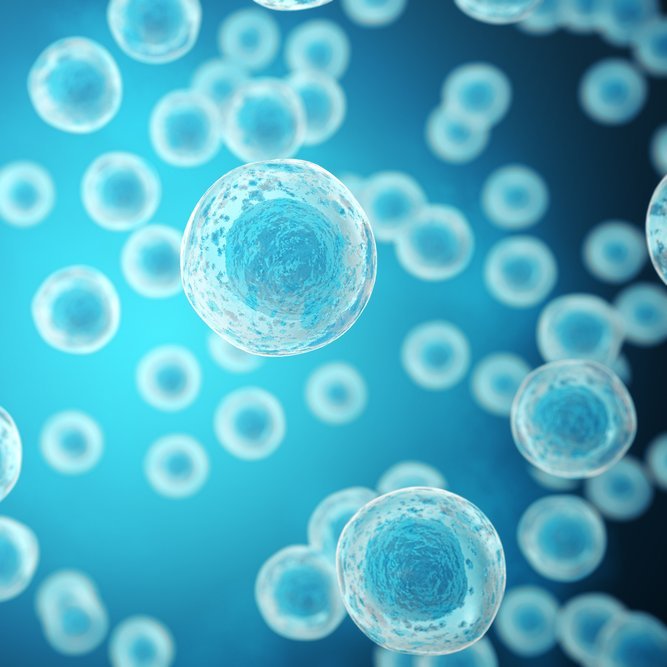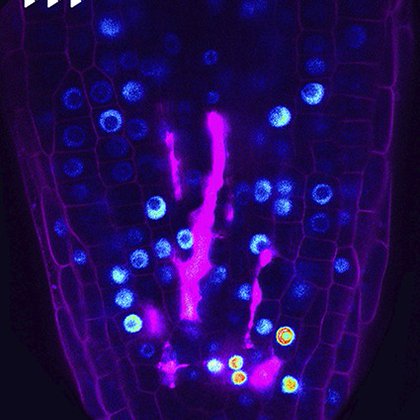
EV Science
@ev_pubs
Followers
689
Following
12
Media
0
Statuses
2K
A bot with the sole purpose of sharing as much #extracellular #vesicle research as possible! Managed by @ChazHinzman
Joined February 2019
RT @ChazHinzman: Encourage you to apply if you have *any* interest, no matter how small, in bio entrepreneurship. Pillar and Petri are doin….
0
3
0
RT @biorxivpreprint: A multi-omics approach identifies pancreatic cancer cell extracellular vesicles as mediators of the unfolded protein r….
0
4
0
RT @avash22: Thrilled to share our work showing the in-vivo communication between RBCs and the heart using Extracellular Vesicles (EVs):.ht….
life-science-alliance.org
Extracellular vesicles (EVs) mediate intercellular signaling by transferring their cargo to recipient cells, but the functional consequences of signaling are not fully appreciated. RBC-derived EVs...
0
10
0
Method for Primary Epithelial Cell Culture from the Rat Choroid Plexus #EVs
pubmed.ncbi.nlm.nih.gov
The choroid plexus consists of a network of secretory epithelial cells localized throughout the lateral, third and fourth ventricles of the brain. Cerebrospinal fluid (CSF) is generated by the...
0
0
0
Amniotic membrane-mesenchymal stromal cells secreted factors and extracellular vesicle-miRNAs: Anti-inflammatory and regenerative features for musculoskeletal tissues #EVs
pubmed.ncbi.nlm.nih.gov
Human amniotic membrane-derived mesenchymal stromal cells (hAMSCs) are easily obtained in large quantities and free from ethical concerns. Promising therapeutic results for both hAMSCs and their...
0
0
1
The Tissue Origin Effect of Extracellular Vesicles on Cartilage and Bone Regeneration #EVs
pubmed.ncbi.nlm.nih.gov
Direct implantation of mesenchymal stem cells (MSCs) for cartilage and bone tissue engineering faces challenges, such as immune rejection and loss of cellular viability or functionality. As nanoscale...
0
0
0
Radioiodine labeling and in vivo trafficking of extracellular vesicles #EVs
pubmed.ncbi.nlm.nih.gov
Biodistribution and role of extracellular vesicles (EVs) are still largely unknown. Reliable tracking methods for EVs are needed. In this study, nuclear imaging using radioiodine were developed and...
0
0
3
Lysyl oxidase engineered lipid nanovesicles for the treatment of triple negative breast cancer #EVs
pubmed.ncbi.nlm.nih.gov
In the field of oncology research, a deeper understanding of tumor biology has shed light on the role of environmental conditions surrounding cancer cells. In this regard, targeting the tumor...
0
0
4
Isolation methodology is essential to the evaluation of the extracellular vesicle component of the senescence-associated secretory phenotype #EVs
pubmed.ncbi.nlm.nih.gov
A hallmark of senescence is the acquisition of an enhanced secretome comprising inflammatory mediators and tissue remodelling agents - the senescence-associated secretory phenotype (SASP). Through...
0
0
4
Small extracellular vesicles deliver osteolytic effectors and mediate cancer-induced osteolysis in bone metastatic niche #EVs
pubmed.ncbi.nlm.nih.gov
Extracellular vesicles (EVs) play critical roles in regulating bone metastatic microenvironment through mediating intercellular crosstalks. However, little is known about the contribution of EVs...
0
0
0
miR-103a-3p and miR-22-5p Are Reliable Reference Genes in Extracellular Vesicles From Cartilage, Adipose Tissue, and Bone Marrow Cells #EVs
pubmed.ncbi.nlm.nih.gov
Cartilage cells (CCs), adipose tissue (ASC)- and bone marrow (BMSC)-derived mesenchymal stromal cells (MSCs) have been shown as promising candidates for the treatment of osteoarthritis (OA). Despite...
0
0
0
Mesenchymal Stromal Cell-Derived Extracellular Vesicles in Lung Diseases: Current Status and Perspectives #EVs
pubmed.ncbi.nlm.nih.gov
Extracellular vesicles (EVs) have emerged as a potential therapy for several diseases. These plasma membrane-derived fragments are released constitutively by virtually all cell types-including...
0
0
1
Extracellular Vesicles Tracking and Quantification Using CT and Optical Imaging in Rats #EVs
pubmed.ncbi.nlm.nih.gov
Exosomes, a subtype of extracellular vesicles, are nanovesicles of endocytic origin. Exosomes contain a plethora of proteins, lipids, and genetic materials of parent cells to facilitate intercellular...
0
1
2
Isolating Multiple Extracellular Vesicles Subsets, Including Exosomes and Membrane Vesicles, from Bovine Milk Using Sodium Citrate and Differential Ultracentrifugation #EVs
pubmed.ncbi.nlm.nih.gov
Milk is a complex fluid that contains various types of proteins and extracellular vesicles (EVs). Some proteins can mingle with EVs, and interfere with their isolation. Among these proteins, caseins...
0
1
2
Buoyant Density Fractionation of Small Extracellular Vesicle Sub-populations Derived from Mammalian Cells #EVs
pubmed.ncbi.nlm.nih.gov
Small extracellular vesicles (sEVs) encompass a variety of distinct vesicles that are secreted to the extracellular space. Many methodologies currently used for EV isolation (e.g., differential...
0
0
1
The aberrant cross-talk of epithelium-macrophages via METTL3-regulated extracellular vesicle miR-93 in smoking-induced emphysema #EVs
pubmed.ncbi.nlm.nih.gov
Cigarette smoke (CS), a complex chemical indoor air pollutant, induces degradation of elastin, resulting in emphysema. Aberrant cross-talk between macrophages and bronchial epithelial cells is...
0
0
1
Therapeutic potential of mesenchymal stem cell-derived extracellular vesicles in regenerative endodontics #EVs
pubmed.ncbi.nlm.nih.gov
Regenerative endodontic procedures are an alternative to conventional root-canal treatment and apexification. There are two different tissue engineering approaches that are currently followed, both...
0
0
0
Inducible heat shock protein A1A (HSPA1A) is markedly expressed in rat myometrium by labour and secreted via myometrial cell-derived extracellular vesicles #EVs
pubmed.ncbi.nlm.nih.gov
The myometrium goes through physiological, cellular and molecular alterations during gestation that necessitate effective cellular proteostasis. Inducible heat shock protein A1A (HSPA1A) is a member...
0
0
0
Selective loss of microvesicles is a major issue of the differential centrifugation isolation protocols #EVs
pubmed.ncbi.nlm.nih.gov
Microvesicles (MVs) are large extracellular vesicles differing in size, cargo and composition that share a common mechanism of release from the cells through the direct outward budding of the plasma...
0
0
2
Isolation and characterization of extracellular vesicles produced by cell lines #EVs
pubmed.ncbi.nlm.nih.gov
Cells produce two broad classes of extracellular vesicles (EVs), exosomes and microvesicles (MVs). Exosomes are 30-150 nm vesicles derived from multivesicular bodies, while MVs are 200-1,000 nm...
0
1
2


